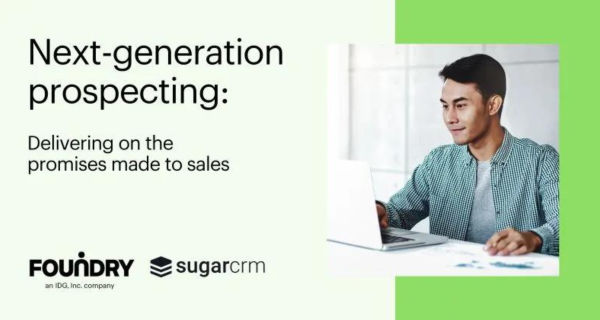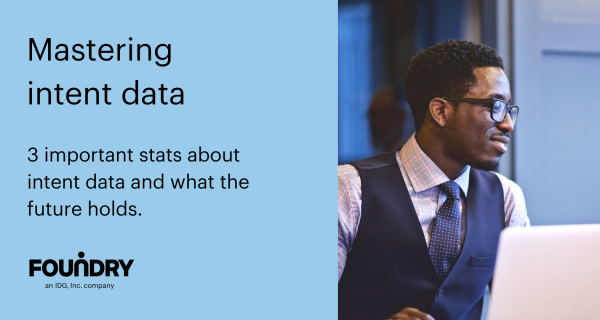Mastering intent data
In recent years, B2B buyer journeys have become increasingly complex and nonlinear. With buyers gathering information across many channels between product sites, review sites, social media, webinars, Slack communities, events, and more…. It’s almost impossible to capture all the potential data points a buying group may take on the path to a purchase.
It becomes even more complicated when you take into account that buying groups now have up to 14-23 different stakeholders on average (Gartner). To leverage intent in order to find and target the right accounts, you’ll need more than just your own CRM data. Let’s get into what separates first, second, and third-party intent data, how you can leverage each source, and how to combine them for best results.
First-party intent data
First-party intent data is information collected about your audiences from your owned digital properties. Some signals indicate topic interest, such as registering for a webinar or downloading a case study. Others are more explicit signs of purchase intent such as exploring pricing. This is your most impactful and reliable source of intent data, but if you only rely on first-party intent data, you only see information from buyers who land on your website.
Examples include:
- Website visits and page views
- Webinar attendance
- Form fills
How can I use first-party intent data?
What’s the point of intent data if you can’t activate it? Let’s talk about three first-party intent data use cases: Discovering new market segments, conducting ad retargeting campaigns and identifying specific areas of focused interest.
Discovering new market segments
If you know your ICP has historically been small to midsize health insurance companies, but an analysis of your first-party data (i.e., website visits, social engagement) shows heightened activity from large hospitality companies, you can create targeted ABM campaigns that solve problems for a new market segment that you identified.
Ad retargeting campaigns
Another opportunity to leverage first-party intent data is with retargeting campaigns. With average first-time conversion rates being around 2% according to industry data, retargeting is essential to help marketers reel in interested buyers who left their website without converting. Deploying retargeting strategies across display, search and social can improve the performance of your ABM campaign efforts. For example, you can show LinkedIn ads to a retargeting audience segment based on pages they visited, ads they interacted with, or videos they watched. Another useful tactic is using bid adjustments on paid search, where you tell Google you’re willing to bid more to be seen by your retargeting audience specifically.
Identifying specific areas of focused interest
In a webinar on pairing ABM with intent, it’s explained that when deeper in the buying cycle – the buyer starts to hone in on specific areas of interests or concerns. They are visiting specific product pages or engaging with certain website CTAs. These first-party signals allow marketers to customize content and offers for sales follow-up.
Benefits vs. limitations of first-party intent data
First-party intent data is cost-effective and privacy-friendly; however, it lacks the scope and scale offered by third-party intent data. First-party intent data is a win-win for you and your buyers. Privacy concerns are kept to a minimum because your company is responsible for collecting, storing, and retaining data, so you don’t need to rely on third parties to ensure compliance with data protection regulations such as GDPR.
To use intent in your ABM campaigns to its full potential, you need software that can integrate various forms of intent into orchestrated campaigns. Why? Because with first-party intent data, you’ll get strong, reliable buyer signals, but with limited scope. Whereas with third-party intent data, you’ll reach more in-market buyers, but you’ll need to sift through a lot of noise (i.e., signals showing general interest in your category rather than buyer intent) to identify actionable insights.
The key to leveraging buyer intent data is combining first and third-party intent to give you the most comprehensive and accurate buying signals of your target accounts, thus enabling you to engage those accounts with relevant ads and sales plays in your ABM campaigns.
Second-party intent data
When discussing intent data sources, second-party intent data is often left out of the conversation. It’s a relatively unique type of data sourced from another organization’s first-party data. The main second-party intent data offerings for B2B marketers come from software review sites like G2 or TrustRadius.
Examples include:
- Product category engagement
- Product vendor engagement
- Customer surveys
How can I use second-party intent data?
You can download second-party intent data directly from the source or utilize an ABM platform to leverage it more effectively. Our integration with G2 allows marketing and sales teams to identify lower-funnel buyer signals and act on them.
For example, let’s say you sell project management software and you want to target companies researching your industry category and competitors. You can identify audiences researching product pages for project management companies like Monday.com or Basecamp and nurture them with relevant competitive differentiation messaging. If these accounts begin to positively engage with your content, you can automatically activate sales follow-up with personalized plays and content.
Benefits vs. limitations of second-party intent data
Because second-party intent data is sourced from lower-funnel buying signals, they are strong predictors of purchase intent. This is a double-edged sword as this data will not reveal top-of-funnel activity, so it won’t be as helpful in reaching accounts that have just identified their problem, potentially making for an uphill battle against your competitors.
Third-party intent data
Third-party intent data consists of research and buying activity occurring on channels and properties owned by others, allowing for a broader view of your market. Third-party intent reveals account interests and topics across the internet but it does not necessarily indicate buying intent.
Examples include:
- Visits to industry publications
- Watched a video in your category
- Read analyst guide
- Online searches
- Researched a competitor
How can I use third-party intent data?
Integrating third-party intent into ABM campaigns allows marketers to orchestrate the buying experience from the top of the funnel through the middle of the funnel and fill your pipeline. For example, with Bombora Company Surge® audience criteria, you can identify accounts surging on relevant topics, and nurture them using multistage, multichannel tactics, including personalized display ads, website messaging, and SDR outbounding all based on the initial topic surge.
Benefits vs. limitations of third-party intent data
With third-party intent data, you’ll have access to a large volume of buyer activity. However, when compared to first-party intent data, third-party intent data is less reliable. This is why depending solely on third-party intent data can be a problem when trying to identify buying signals. When dealing with a large volume of data, you’ll need to cut through the noise to identify reliable signals of buyer intent.
Smart Score uses first and third-party intent data signals paired with website and CRM activity to identify which accounts should be prioritized for sales outreach. With proprietary algorithms to provide a single score to prioritize accounts, Smart Score factors in baseline activity for accounts and spikes of activity that account for size and historical data.
Get the most out of intent data with a combination of first-party, second-party and third-party data
One of the most effective ways to leverage all intent data types, whether first, second, or third-party intent, is to run them through an ABM platform and use that as a decision engine to automatically execute the next best steps depending on the activities that each account is showing interest in. In a webinar on Buying Signals and Predictive Orchestration, Andre Yee explains that sourcing third-party data, first-party data (CRM data, marketing automation and website analytics) and offline data sources then scoring them and triggering the right multichannel, multistage play is the key to shaping the buyer experience for your prospects. A data-driven approach will help marketing and sales to identify the best plays over time to drive pipeline and increase revenue.
ABM orchestration pairs best with Foundry Intent
By pairing multiple types of intent data with ABM orchestration, you can achieve fuller coverage of your total addressable market in real time. Foundry Intent is a combination of intent data collected from your website, social media interactions, engagements across the public web, research signals on global content, and Foundry’s proprietary audiences from their publishing network, and events data.
Conclusion
First-party, second-party and third-party intent data are each valuable to marketing and sales teams but the quality of intent data is only as good as the sources it draws from. Not all data is created equal. There are nuances between each type of intent data that must be considered to fully comprehend buying intent and action on it. The true power of intent data comes from connecting the dots between all three sources in order to customize your buyer’s experience throughout their buying journey.
See how you can bolster your intent data strategy with first-party contact-level Foundry intent.




